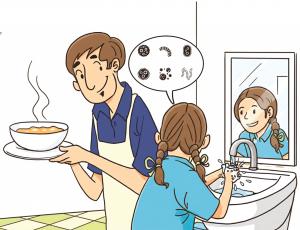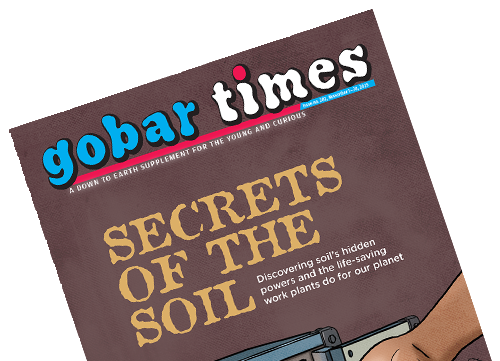
Curious Sucharita discovers how the overuse of antibiotics in fish farming can build superbug resistance — and what judicious use can do to stop it.

A fascinating account by a passionate marine environmentalist explaining why seaweeds are environmentally the most sustainable foods on our planet. ******************************* Hi! Do you guys know what a seaweed is? It’s like the spinach of the sea. You might have eaten it in a roll of sushi or a bowl of green salad or a soup. But most likely, you wouldn’t have tasted it at all. That’s because in India, we don't have a popular tradition of seaweeds. But that's about to change—I believe as the founder of a seaweed food company called The Good Ocean...

A herb with beautiful white flowers with broad, heart-shaped leaves. Unlike its appearance, it has a fish-like taste and smell. Hence, the name, Fish Mint! But why are we talking about Fish Mint? The medicinal properties and benefits of fish mint have been documented in ancient texts of traditional Chinese and Japanese medicines, as well as Ayurveda and Siddha. The herb which is believed to be a native of Southeast Asia grows easily on moist soils and is resistant to flooding...

A glimpse from the Gobar Times Design Studio, a designing contest organized as part of the Green Schools Carnival 2023, to allow our talented readers to express their vision and version of the Gobar Times by curating two-pages of the magazine—showing what they would like to read and how.

A refreshingly sweet and innocent observation by a child of an otherwise very worrying issue of—river pollution—with a heartwarming appeal for water conservation. Once upon a time, during the holidays, I was travelling from Delhi to my village nearby. On the way, we guys came across the Yamuna River. Looking at the river, my younger brother instantly commented, “It doesn’t snow in Delhi even during winters. But here, on the river, it seems to have snowed in peak summers!”... Then, I explained to him that the white foam on the river surface is not snow but the chemical effluents emitted by huge …

An interview with Deepak Bhati and Gauri Arora, Programme Officers in the Sustainable Food Systems team of the Centre for Science and Environment, New Delhi, simplifying the complicatedness of antimicrobial resistance for our young readers. ******************************************** Hi Deepak and Gauri! We’ve been hearing about this complex and scary thing, ‘Antimicrobial Resistance’ (AMR). Can you please unpack it for our kids?...

From privileges for a few to rights for all There was a time, not so long ago, when the so-called ‘civilised’ world was divided into free humans and slaves. Free humans were those who had the right to own property while the slaves were those who were considered as property. Free humans had the privilege to make decisions not only for themselves but also for their slaves. As we learnt from others who we thought were less civilised than us...

What are Micro-Plastics? Micro-plastics have not been defined in particular. They are just tiny particles that result from the disintegration of bigger plastic materials. However, most researchers say that any plastic smaller than 5 millimetres in size is a micro-plastic. Hence, these are really, really teeny-tiny! Plastics are made up of polymers, which are derived from fossil fuels. A whole lot of chemicals are added to the polymers—close to 10,000—to ensure that a given plastic has the desired properties...

A passionate movie buff and avid videographer narrates his journey through the reels on the importance of films in spreading environmental awareness. **************************** Growing up in Perumannur, a small village in Kerala, my childhood was all about ploughing fields, playful cows and calves, and a big pond where I learnt swimming. I was so close to nature that it never occurred to me if the environment—with all its greenery, birds, trees, and grass—can ever be distinctively separate from us. My training, among the lush green coconut and rice fields...
.png)
The National Geographic magazine has recognised the ‘Southern Ocean’ as the world’s fifth ocean on June 8, 2021. The change in name was in alignment with the National Geographic Society’s initiative to conserve the world’s oceans. The magazine has usually followed the International Hydrographic Organization (IHO) on marine names, it said in an article notifying the change. The IHO had recognised ‘Southern Ocean’ as a distinct body of water surrounding Antarctica in 1937...

